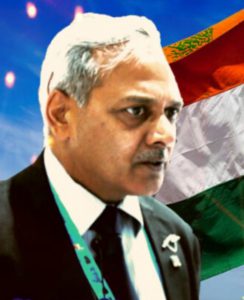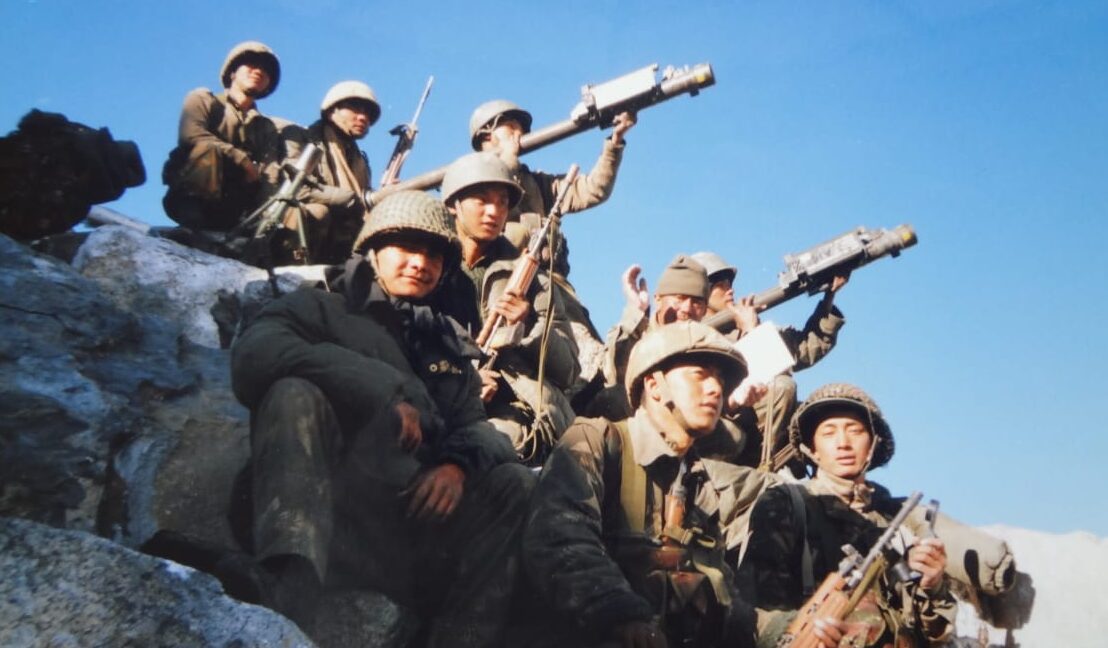 As the largest ground force in the world, the 1.4 million-strong Indian Army is a study in high performance. From motivation, to the importance of the individual team and manager, to leadership, there’s no dearth of insights that can be mined from the army. worxogo’s co-founder Sanjay Ghoshal talks to Brigadier Amul Asthana, an ex-Infantry brigadier with over 30 years in the army and currently the Vice President of Projects at Zen Technologies Ltd. In this passionate chat, Brig Asthana talks about the importance of making high performance and team culture a habit, leading from the front and building on intrinsic motivations rather than incentives.
As the largest ground force in the world, the 1.4 million-strong Indian Army is a study in high performance. From motivation, to the importance of the individual team and manager, to leadership, there’s no dearth of insights that can be mined from the army. worxogo’s co-founder Sanjay Ghoshal talks to Brigadier Amul Asthana, an ex-Infantry brigadier with over 30 years in the army and currently the Vice President of Projects at Zen Technologies Ltd. In this passionate chat, Brig Asthana talks about the importance of making high performance and team culture a habit, leading from the front and building on intrinsic motivations rather than incentives.
Sanjay: To start off, I’d like to understand what motivated you to join the army and how you came to be involved in the Kargil War?
Brig Asthana: I joined the army because I always wanted to, my father was also in the army and I grew up watching him serve the country with dedication. My dream was to be a frontline soldier, up front, to fight for my country. And I got a lot of opportunities to do that in combat operations in various places.
 We were the lucky few who happened to get a chance to fight the Kargil war. We were de-inducting from Siachen Glacier when Kargil happened and we were called up to the front immediately. Our battalion was in battle continuously for 3 months – from the 7th of May to our return on the 6th of August, when I finally had a bath, not something my wife recollects with fondness! We weren’t covered in the news because we were further from the roadhead. Which also meant, we had to deal with a lot of issues of logistics, food and water, evacuation of casualties, medical support etc. There were very big challenges in those 90 days – I could write a book on each day! At the end of it, we got the highest honors for gallantry and achievement. [Brig. Asthana and his battalion were involved in the 1999 Kargil War, one of the most recent instances of high-altitude warfare and one where India gained a decisive victory.]
We were the lucky few who happened to get a chance to fight the Kargil war. We were de-inducting from Siachen Glacier when Kargil happened and we were called up to the front immediately. Our battalion was in battle continuously for 3 months – from the 7th of May to our return on the 6th of August, when I finally had a bath, not something my wife recollects with fondness! We weren’t covered in the news because we were further from the roadhead. Which also meant, we had to deal with a lot of issues of logistics, food and water, evacuation of casualties, medical support etc. There were very big challenges in those 90 days – I could write a book on each day! At the end of it, we got the highest honors for gallantry and achievement. [Brig. Asthana and his battalion were involved in the 1999 Kargil War, one of the most recent instances of high-altitude warfare and one where India gained a decisive victory.]
Sanjay: In the corporate world, HR managers love the bell curve of employee performance, a trend we don’t see in the army, where anything less than a 100% probably means no chance of survival! What are some of your observations on how the army achieves this high-performance from everyone, all the time?
Brig Asthana: There is always a bell curve in performance, to be clear. It is much narrower in the army, but it is there, we are all human beings. But the passion that draws one to the army remains deep within – which makes you take all kinds of risks to achieve the objective. The tasks we have in the army are very daunting, challenging but we are trained to overcome and deliver victory. Soldiers take it on as their duty and they do it with a lot of pride.
In the army, this kind of high-performance becomes a habit.
The culture itself is motivating. Suddenly if the leader is absent, things will not come to a standstill. A 100 other leaders will rise up to achieve the goal. Every team member is motivated.
We have a saying in the Gorkha regiment, Kafir bandha mornu jati – It is better to die than be a coward. I believe it’s true in the corporate world also – it is better not to do something than to do it half-heartedly. If you do anything, do it better than the best.
Coercive leadership does not work and overtly incentive-based leadership does not work. It may work up to a point but it cannot carry the team for a longer duration.
Sanjay: How does the leadership empower their hierarchy in the army? You said, “The battalion is the nearest thing to a soldier”. How is a line manager empowered to motivate and lead his team?
Brig Asthana: In the battle everybody has to make his own decision. People are distributed across so many kilometers and somebody might make a decision which you think is wrong. But you always support the decision of a subordinate. And they know that. They know that their leader will stand by them and they rely on that support and leadership. The objective is ingrained into every member on the team – the job has to get done.
Sanjay: How do you build a spirit of teamwork in your training?
Brig Asthana: Teams are welded by fire. In 1984, we were training in a remote place in Rajasthan. Normally the training is very complicated – usually 20 different types. But I had a company commander who decided to do only two things – firing and movement. Now movement means carrying your full battle load on foot for 50-100 kms going and coming, walking day and night. With limited food and water and temperatures at 51 degrees centigrade (123 degrees Fahrenheit), I worried that people would get a heat stroke or even die. For that one month, no one got a heat stroke, no one died. It was the roughest training I’ve ever done. We were the most achieving unit – 150 of us, and that team continues to be welded till date. It is famously said, “the more you sweat in peace, the less you bleed in war.” A leader must be decisive, up front, visible, reliable and he must communicate with a strong voice – the vision and the war cry.
Sanjay: What role does a leader play and what are some of the key traits you’ve observed in successful leaders?
Brig Asthana: The leader is extremely important. He doesn’t say “go there,” he says, “follow me.” And he goes ahead and the others follow him. Not because of coercion or any incentive. It’s a habit, they’re convinced and the leader has been groomed over the years in this kind of culture.
He has to inspire his team – by his own actions (do as I do, not do as I say). Then they know that this leader can take them to greater heights, to success in difficult times.




